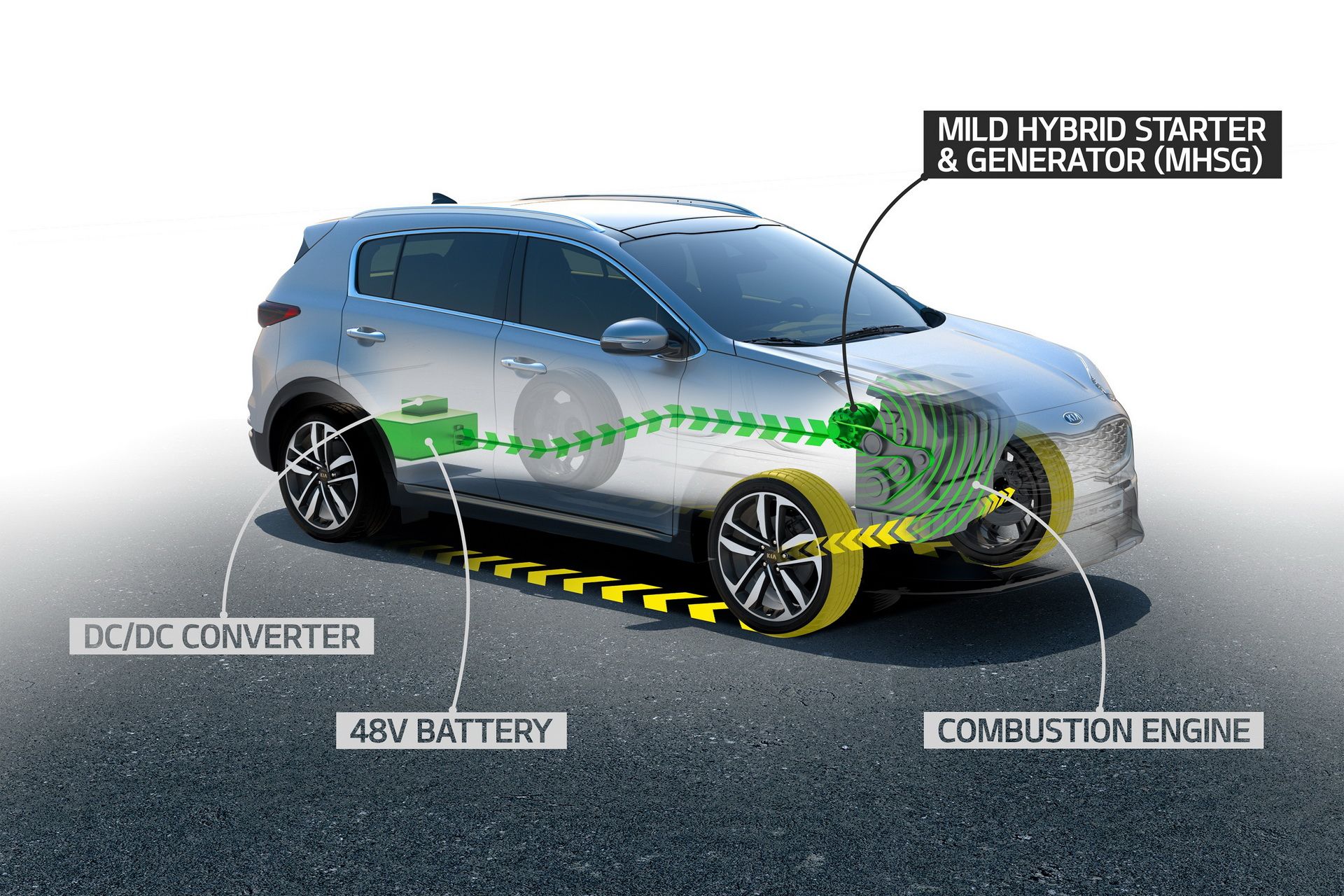While some automakers have started ditching oil burners completely, others, such as Kia, continue to invest in new technology that helps diesels improve fuel economy and emit less CO2.
The Korean automaker confirmed a new diesel mild-hybrid powertrain, which will debut in the Sportage later this year, followed by the third-gen Ceed in 2019.
Christened ‘EcoDynamics+’, the new mild-hybrid powertrain is paired with a 0.46 kWh 48-volt lithium-ion battery and uses a new mild-hybrid starter-generator (MHSG) unit. The latter is connected to the diesel engine’s crankshaft by a belt, and under acceleration, it provides up to 10kW (14PS / 13hp) of extra power.
Kia says the system can switch between two modes, called ‘motor’ and ‘generator’. In ‘motor’, the powertrain reduces engine load and emissions, and in ‘generator’, it harvests kinetic energy during in-gear deceleration and braking, using it to recharge the batteries.
Also Read: Kia Niro EV Revealed, Can Travel Up To 236 Miles On A Single Charge
Paired with the brand’s Selective Catalytic Reduction (SCR) active emissions control technology, the system helps reduce CO2 emissions by up to 4 percent on the new WLTP, and up to 7 percent on the NEDC, thus enabling “Kia to offer cleaner diesel engines”, in their own words.
Controlled by an advanced ECU, the powertrain benefits from a new ‘Moving Stop & Start’ function. This allows the internal combustion engine to automatically turn off during braking and in-gear deceleration, whereas the MHSG can re-ignite it whenever the driver presses the throttle.
Kia hasn’t released any specs yet, but says that the 48V battery will be located beneath the boot floor, at least in the case of the Sportage. The company claims thats integrating the EcoDynamics+ mild-hybrid system into the existing architecture “is relatively straightforward”.
The EcoDynamics+ will be eventually adapted for use in petrol engines too, and is compatible with manual and automatic transmissions. It can also be adapted for FWD, RWD and AWD drivetrain layouts.
The company’s plan is to launch 16 “advanced powertrain vehicles by 2025”, including 5 EVs, 5 PHEVs and 5 hybrids, in addition to a new FCV in 2020.




